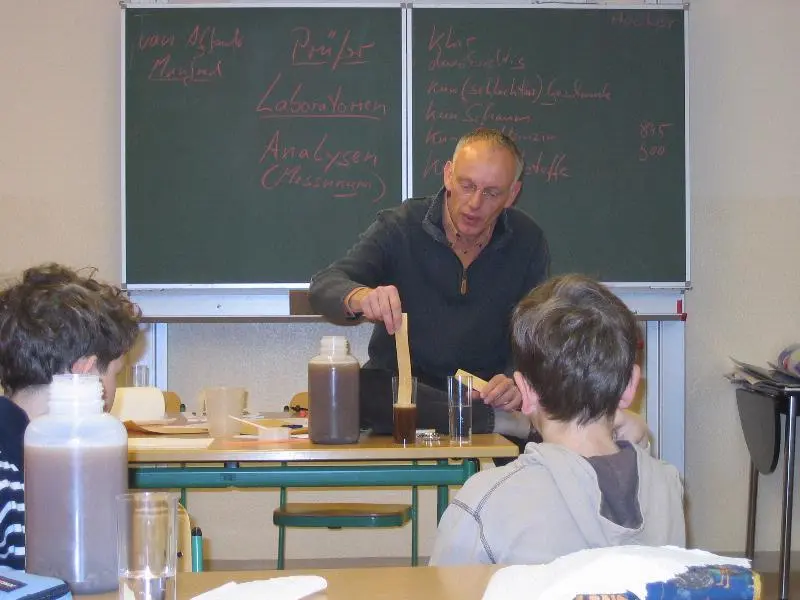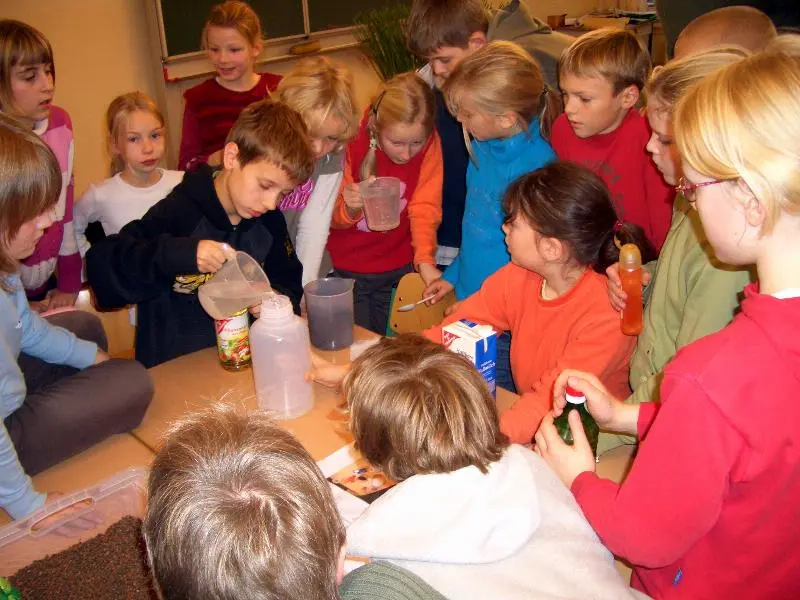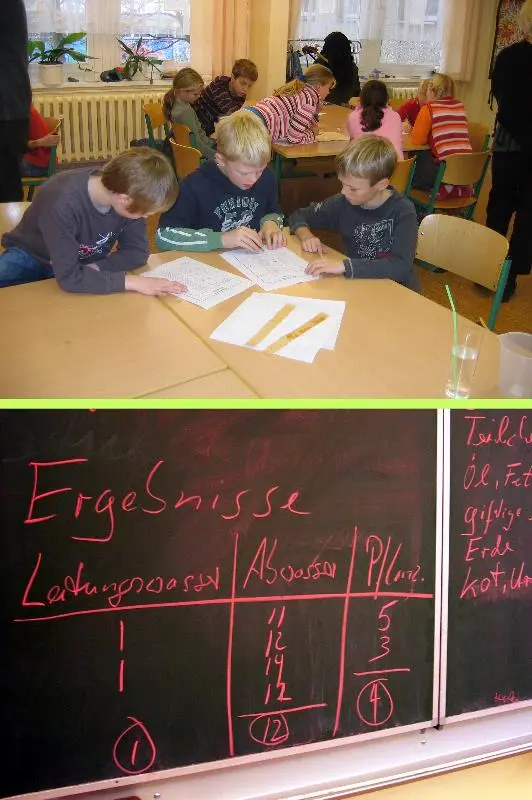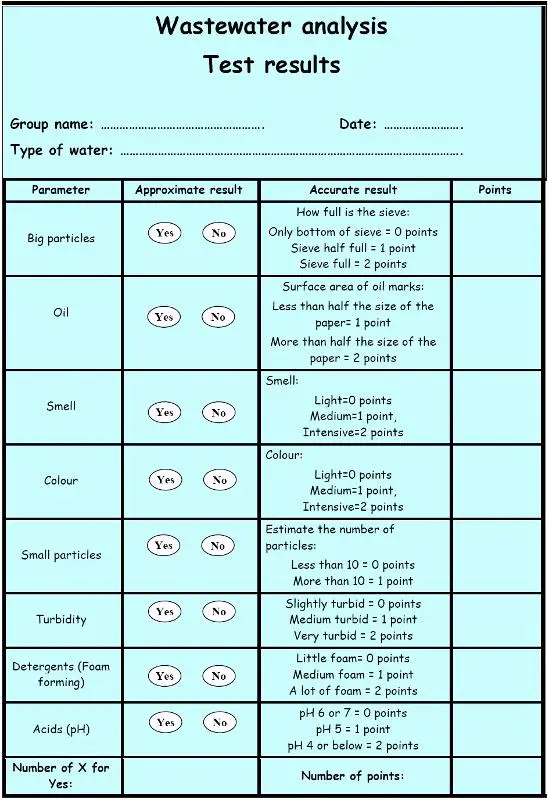Wastewater analysis
The experiments demonstrated here can either be conducted as an individual lesson or, once established, as routine analysis for measuring the performance of the constructed wetland model, which has to be maintained and periodically fed with «artificial wastewater». This lesson aims to explain the concepts of «clean water» and «water quality guidelines» and supports to understand the principles of water analysis.
Learning goals
- Pupils learn how to define the terms «clean water» and «quality guidelines».
- They should understand the principles of water analysis and how to measure different substances in water.
Background information
Ask pupils to remember the lesson «Water distribution and use» and ask them how water gets dirty and by what?
Explain which substances are found in household (domestic) wastewater.
Wastewater components:
- Easily degradable organic substances, such as human and animal faeces and food scraps.
- Nutrients, such as phosphate, nitrate, ammonium.
- Pathogens, like bacteria, viruses, protozoa.
- Long lasting organic chemicals, such as artificially produced substances, from disinfectants, paints, solvents etc..
- Heavy metals, salts
Discuss who defines if water is clean or not. Ask how they can trust that bottled drinking water is really clean?
Mention, that water discharged from wastewater treatment facilities, must meet stringent federal and state standards.
In order to decide if the treatment of wastewater was successful it is necessary to measure the concentration of pollutants before and after treatment. For this purpose many sets of analytical methods exist that normally are carried out in specialized water analysis laboratories. Each country has defined water quality guidelines that give clear limit concentrations (how much can be tolerated) for more than a hundred different substances. Theses limits vary with different uses of the water. For example, the limits for drinking water are much lower than for water used in agriculture.
Time requirement
- Preparation time 1-2 hours (incl. shopping)
- Activity time 45 min (lesson) or 15 min (routine analysis)
Material requirement
Artificial Wastewater (2 L)
(Caution: Be aware that pupils should never taste the water and ingredients!)
- 1 transparent water jug (2 L)
- 2 litres of water
- 6 sheets of toilet paper
- 1 spoon of liquid soap (shampoo)
- 1 spoon of vinegar
- 1 spoon of vegetable oil
- 4 spoons of ground coffee
- 4 spoons of milk
Material for analyses (1 set)
- 2 transparent plastic beakers (200 mL)
- 1 spoon
- 1 drain sieve
- 2 strips of brown packaging paper (3x15 cm)
- 1 straw
- 2 pH-strips (pH 2-10) and a colour table
- 1 data sheet
- 1 pen
- 1 set of cleaning equipment (sponge, towel, paper, etc.)
Let's start
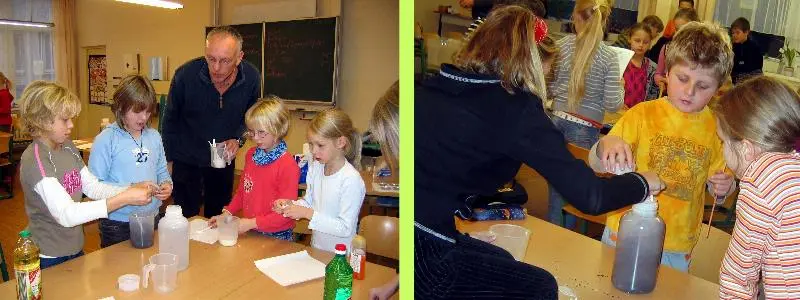
Preparation of artificial wastewater: Fill the water jug with 2 L of tap water. Rip the toilet paper into small pieces and put them together with the other ingredients (liquid soap, vinegar, vegetable oil, coffee ground and milk) into the jug. Close the jug tightly and shake the water well. The artificial wastewater is now ready.
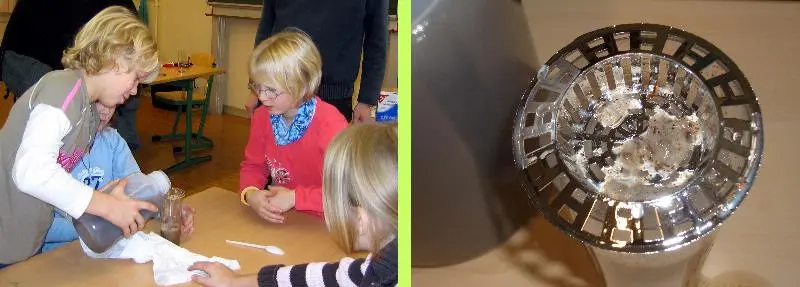
Big particles: Gently shake the jug with the wastewater. Have a look and decide if you see big particles (paper, wood) or not, if so, mark the «Yes». Now put the sieve on the plastic beaker and fill it half with wastewater. How many big particles are retained? (Only bottom of sieve is covered = 0 points. Sieve half full = 1 point, Sieve full = 2 points.)
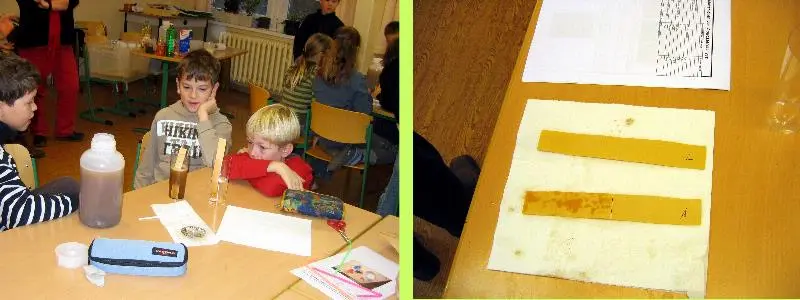
Oil: Take a strip of brown packaging paper (3 cm x 15 cm), write the name of the sample (tap water, wastewater or treated water) on top of it and dip it into the water sample. Wait for 1 minute and take it out. Place it on a sheet of cleaning paper. After the paper is dry (10-20 min) decide if there are oil marks (darker than the paper colour) remaining on the paper, if so, mark the «Yes». Estimate the area of the oil marks. (Less than half the size of the paper = 1 point, More than half the size of the paper = 2 points)
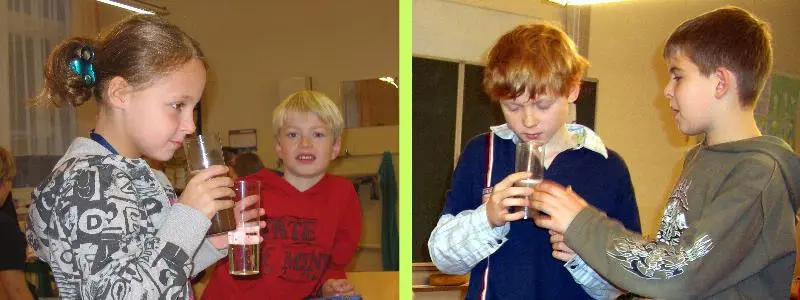
- Smell: Decide if the water sample smells different from tap water. If yes, mark the «Yes» and write down the type of smell and intensity. Distinguish between light, medium and intensive smell. (Light = 0 points. Medium = 1 point. Intensive = 2 points)
- Colour: This is a visibility test. Decide if the water is coloured. If yes, mark the «Yes» and write down the colour and intensity. Distinguish between lightly coloured, medium and intensively coloured. (Light = 0 points. Medium = 1 point. Intensive = 2 points)
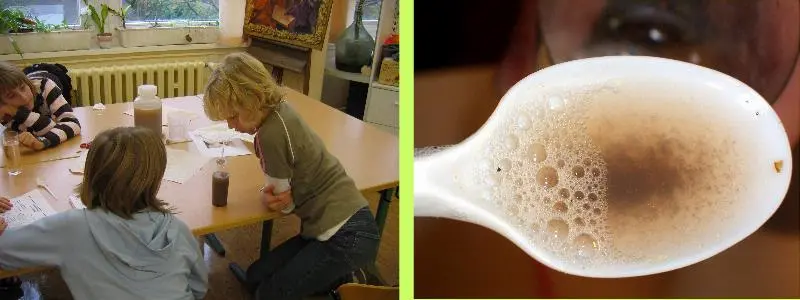
Small particles: Gently mix your water sample with a spoon. Have a look and decide if you see particles or not. If you do, mark the «Yes». Take out a spoon full of water and estimate the number of particles you see in the spoon. (Less than 10 = 0 points. More than 10 = 1 point. More than 100 = 2 points)
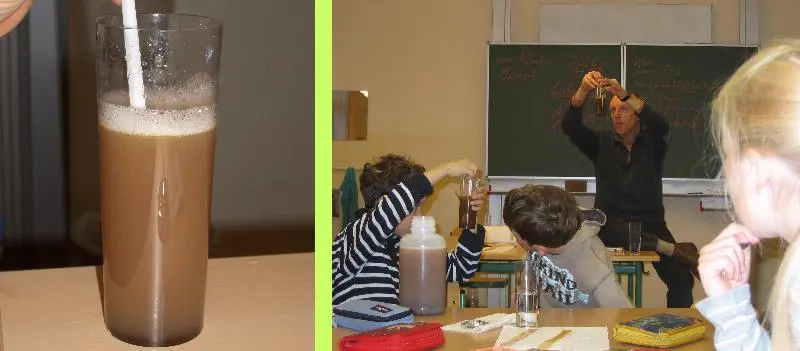
Turbidity: Take the beaker with the water sample, look through the beaker and decide if the water is turbid or not. If it is, mark the «Yes». Take a spoon, put the spoon behind the beaker and try to perceive it, looking only through the beaker. If you see the spoon the water sample is slightly turbid, in case you don't see it the water is medium turbid. Take the spoon and put it into the centre of the beaker. If you still don't see the spoon through the beaker, the wastewater sample is very turbid. (Slightly turbid = 0 points. Medium turbid = 1 point. Very turbid = 2 points.)
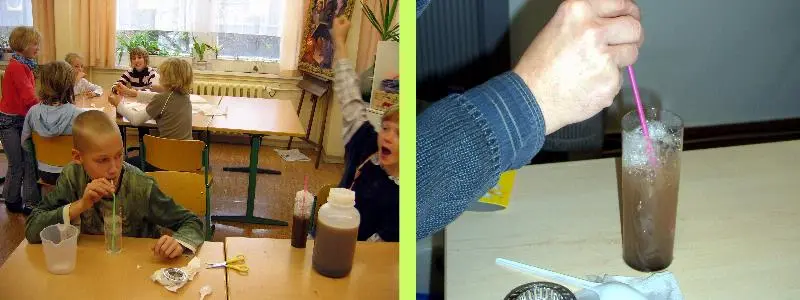
Detergent: One pupil deeply takes in breath and very gently breathes out into the water sample using the straw. Do this only once, it shouldn't be repeated. Observe if there is foam. If so, mark the «Yes». Decide if there is little, medium or much foam. If the wastewater already has foam on it, only consider the newly formed foam. (Little foam= 0 points. Medium foam = 1 point. A lot of foam = 2 points)
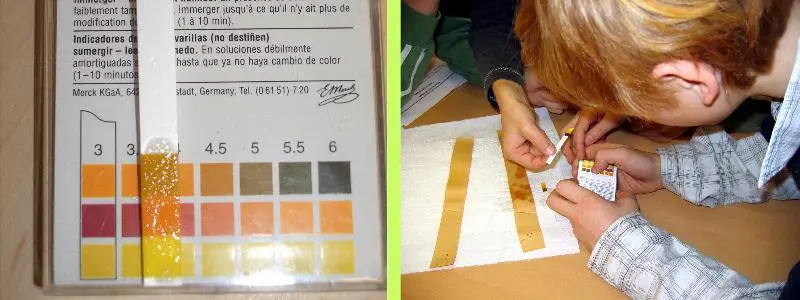
Acid (pH): Use a test strip and dip it into the wastewater sample. Immediately return it and compare the colour with the reference. Write down the value of pH. If pH is below 5, the water contains acids and you can mark the «Yes». (pH 6 or 7 = 0 points, pH 5 = 1 point, pH 4 or below = 2 points)
See and feel
- Qualification: Count how often you marked the «Yes».
- Quantification: Count the points for of each parameter.
- Compare the quality of different water samples (tap water, wastewater or treated wastewater).
Didactical comments
The set of analyses presented here are meant to characterize the operation of the constructed wetland model (see experiment: «Constructing a wetland model»).
